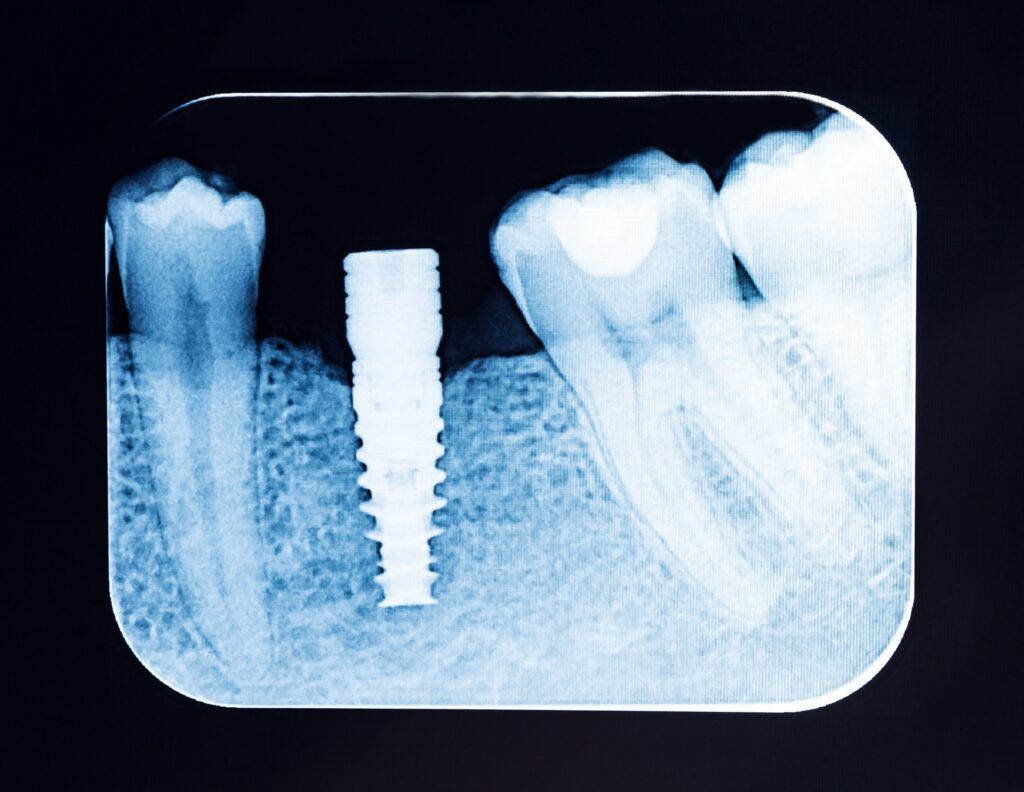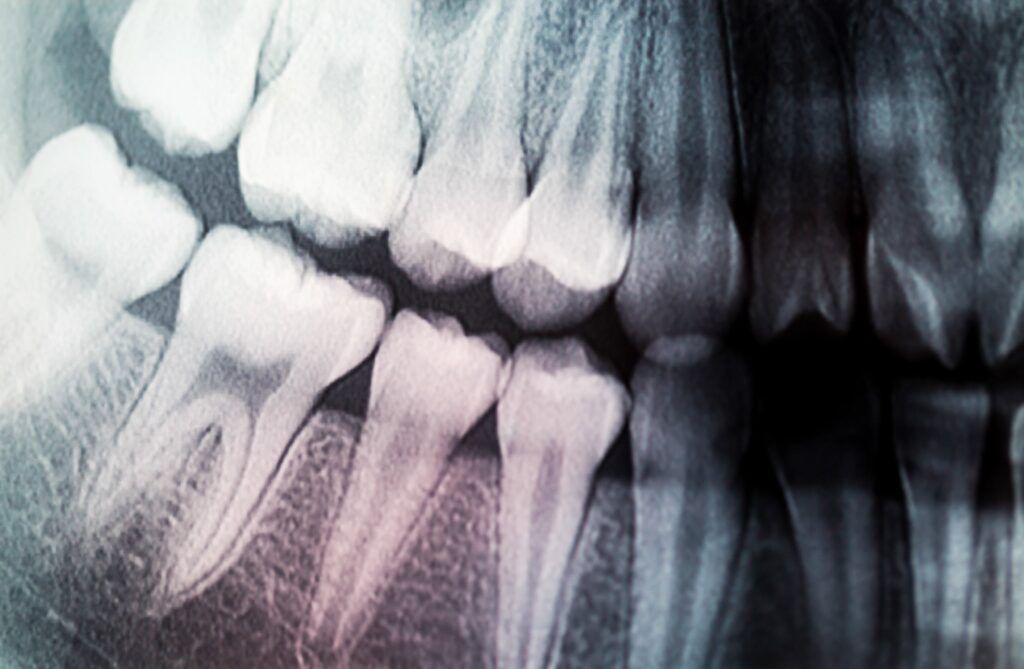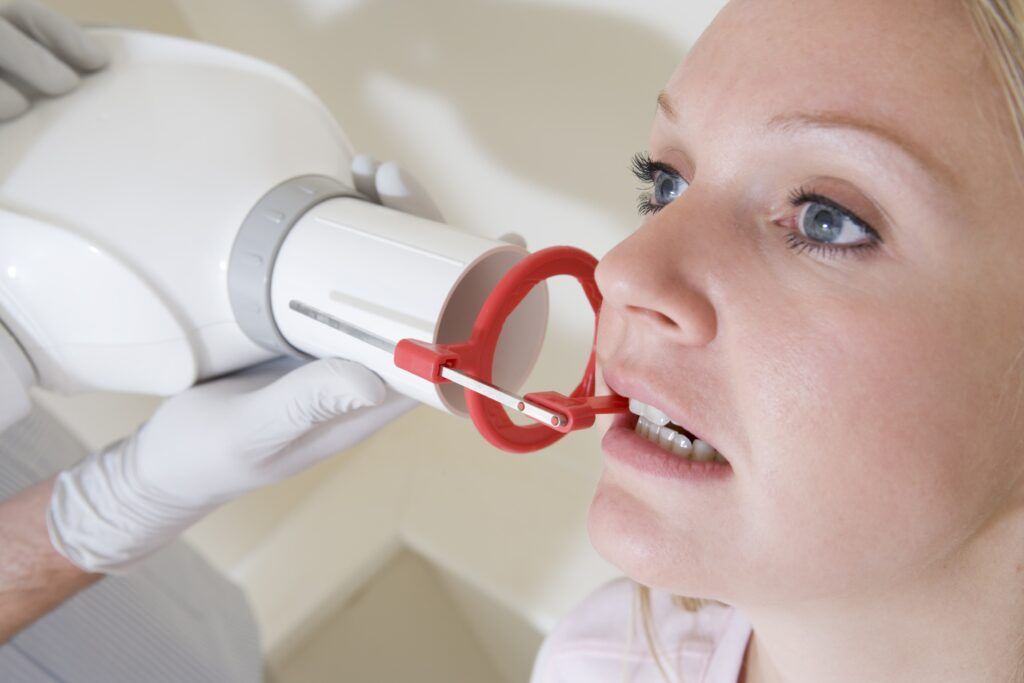
[ad_1]
Periapical X-rays play a pivotal position within the realm of dentistry, serving as a necessary imaging device that goes past mere analysis to help in meticulous planning for dental implants. These radiographs supply a close-up view of your entire tooth—from the crown to the basis nestled within the jawbone—offering invaluable insights into the bone construction and well being essential for implant success. Because the cornerstone of implant planning, Periapical X-rays not solely reveal the hidden particulars beneath the gums but additionally information dental professionals in navigating the complexities of implant placement. This weblog delves into the importance of Periapical X-rays, elucidating their integral operate in guaranteeing the precision and security of dental implant procedures.
In This Weblog:
- Understanding Periapical X-Rays
- The Function of Perioapical X-Rays in Implant Planning
- Benefits of Periapical X-Rays in Implant Dentistry
- Limitations and Concerns
- Getting ready for a Dental Implant Process
Understanding Periapical X-rays
Periapical X-rays are a kind of dental radiograph that gives an in depth view of your entire tooth and its surrounding bone construction. These photographs are crucial for analyzing the periapex, the realm across the tip of the tooth’s root, therefore the title “periapical.” In contrast to panoramic or bitewing X-rays, which seize a broader view of the mouth or sections of the tooth, Periapical X-rays deal with particular person tooth, providing a close-up perspective that’s important for diagnosing root construction and bone well being.

The method of taking Periapical X-rays includes putting a small movie or digital sensor within the mouth, near the tooth being examined. The X-ray machine then directs a targeted beam of radiation via the tooth and onto the movie or sensor, capturing a transparent picture of the tooth’s anatomy. This system permits dentists to see the tooth in its entirety, from the crown to the basis, together with the encircling jawbone and tender tissues.
What units Periapical X-rays aside from different dental imaging strategies is their capability to supply a complete view of the tooth and its speedy atmosphere. Whereas panoramic X-rays are helpful for getting a normal overview of the tooth and jaw, they lack the element vital for in-depth evaluation of particular tooth. Bitewing X-rays, alternatively, are glorious for detecting cavities between tooth however don’t present the basis and bone construction as Periapical X-rays do.
In abstract, Periapical X-rays are a elementary device in dental diagnostics, providing an in depth and localized view of particular person tooth and their supporting buildings. This detailed imaging is essential for assessing the tooth’s situation and the bone’s well being, making it an indispensable a part of the planning course of for dental implants and different exact dental procedures.
The Function of Periapical X-rays in Implant Planning
Periapical X-rays function a vital part within the planning section of dental implants, offering crucial data that influences your entire implantation course of. These detailed photographs are invaluable for assessing the situation of the jawbone and the well being of adjoining tooth, that are key components in figuring out the feasibility and method for implant placement.
Assessing Bone Well being and Construction
One of many main makes use of of Periapical X-rays in implant planning is evaluating the amount and high quality of the jawbone. The success of a dental implant largely relies on the bone’s capability to assist the implant put up. These X-rays supply a transparent view of the bone density and quantity, permitting dentists to evaluate whether or not there’s enough bone to anchor the implant securely. In circumstances the place bone loss has occurred, the X-ray can assist in planning extra procedures, corresponding to bone grafting, to create a stable basis for the implant.
Figuring out Anatomical Landmarks and Potential Obstacles
Periapical X-rays are instrumental in mapping out the anatomical landmarks throughout the jaw, corresponding to nerves, sinuses, and blood vessels. Exact data of those buildings is essential to keep away from issues through the implant process. For instance, the X-ray can reveal the proximity of the inferior alveolar nerve within the decrease jaw, serving to to forestall nerve injury throughout implant placement.
Moreover, these X-rays can detect potential obstacles corresponding to impacted tooth, cysts, or different abnormalities which may complicate the implant course of. Figuring out these points early permits for the required changes within the remedy plan, guaranteeing a safer and more practical implant process.
Periapical X-rays are elementary within the preparatory phases of dental implant procedures. They supply detailed insights into the oral anatomy, enabling dentists to make knowledgeable choices and plan successfully for implant placement. By totally evaluating the bone construction and figuring out potential challenges, these X-rays assist make sure the longevity and success of dental implants.
Benefits of Periapical X-rays in Implant Dentistry
Periapical X-rays are a cornerstone within the discipline of implant dentistry, providing a number of benefits that make them indispensable within the planning and execution of dental implants. Their high-resolution photographs and detailed views of the tooth roots and surrounding bone construction present a wealth of data that’s essential for profitable implant placement.
Excessive-Decision Photos for Detailed Evaluation
The first benefit of Periapical X-rays lies of their capability to supply high-resolution photographs that reveal the trivia of the tooth construction and jawbone. These photographs are detailed sufficient to point out even the smallest modifications in bone density, permitting dentists to evaluate the bone’s well being and viability for supporting an implant. This stage of element is important for figuring out appropriate websites for implant placement and for figuring out the optimum angle and depth for implant insertion.
Detecting Underlying Points

Periapical X-rays are notably efficient in uncovering underlying points that would jeopardize the success of a dental implant. Circumstances corresponding to infections, bone loss, or hidden dental buildings like impacted tooth or root remnants could be detected via these X-rays. Early detection of such points permits immediate intervention, which might enhance the general prognosis of the implant process. As an example, treating an an infection or performing a bone graft earlier than implant placement can considerably improve the soundness and longevity of the implant.
Precision in Measuring Bone Density and Thickness
One other vital benefit of Periapical X-rays is their precision in measuring bone density and thickness. That is essential for dental implants, because the bone should be of enough high quality and amount to assist the implant. These X-rays present correct measurements that assist in evaluating whether or not the bone is appropriate for an implant or if extra procedures like bone grafting are wanted to enhance the bone’s situation.
As well as, Periapical X-rays can be utilized to watch the therapeutic course of after an implant has been positioned, guaranteeing that the bone is integrating correctly with the implant. This ongoing analysis is essential to the long-term success of the implant.
In abstract, the benefits of Periapical X-rays in implant dentistry are manifold. They provide high-resolution photographs for detailed evaluation, permit for the detection of underlying points, and supply exact measurements of bone density and thickness. These advantages make Periapical X-rays a necessary device within the planning and monitoring of dental implants, contributing considerably to the success and longevity of the remedy.
Limitations and Concerns of Periapical X-rays
Whereas Periapical X-rays are invaluable in dental implant planning, they arrive with sure limitations and concerns that should be acknowledged. Understanding these constraints helps in optimizing using these X-rays and guaranteeing that the implant planning course of is as correct and efficient as potential.
Scope of Imaging
One of many main limitations of Periapical X-rays is their scope of imaging. These X-rays deal with particular person tooth and the speedy surrounding space, offering an in depth view of particular sections of the jaw relatively than a complete overview. This localized perspective could be a disadvantage when a broader view of the jaw is required to evaluate the general oral well being and plan for a number of implants or advanced circumstances. In such conditions, Periapical X-rays are sometimes used together with different imaging methods, like panoramic X-rays or CBCT (Cone Beam Computed Tomography), to acquire a extra full image of the dental and skeletal buildings.
Potential for Misinterpretation
The interpretation of Periapical X-rays requires a excessive diploma of ability and expertise, as there’s a danger of misreading the photographs. Elements corresponding to overlapping buildings, various bone densities, and the presence of artifacts can complicate the evaluation. Misinterpretation can result in incorrect assessments of bone high quality or the proximity of crucial anatomical buildings, doubtlessly affecting the planning and consequence of the implant process. Subsequently, it’s essential for these X-rays to be evaluated by skilled dental professionals who can precisely decipher the nuances of the photographs.
Complementary Use with Different Imaging Strategies
Periapical X-rays are sometimes a part of a broader imaging technique. Whereas they supply detailed details about the tooth and speedy bone construction, they won’t seize the whole anatomical context wanted for complete implant planning. For instance, a panoramic X-ray or a CBCT scan could also be vital to guage the general jawbone construction, the connection between completely different tooth, and the proximity to nerves and sinuses. Combining Periapical X-rays with these different imaging strategies permits for a extra thorough evaluation and exact planning of the implant process.
Whereas Periapical X-rays are a crucial device in dental implant planning, their effectiveness is enhanced when their limitations are acknowledged and addressed. By understanding the scope of imaging and potential for misinterpretation, and by integrating these X-rays with different imaging methods, dental professionals can guarantee a extra correct and profitable implant planning course of.
Getting ready for a Dental Implant Process: The Affected person’s Perspective
Present process Periapical X-rays is a normal process within the preparation for dental implant surgical procedure, and understanding what to anticipate can assist sufferers really feel extra comfortable. This part outlines the method from the affected person’s perspective, offering insights into what happens through the X-ray course of and the way it matches into the general implant planning section.
The X-ray Process
The method of getting Periapical X-rays is easy and painless. Right here’s what sometimes occurs:

- Preparation: The dental skilled will clarify the process and information the affected person on how one can place themselves within the dental chair. Sufferers are normally seated upright or barely reclined.
- Placement of the X-ray movie or sensor: A small, flat piece of movie or a digital sensor is positioned within the affected person’s mouth, behind the precise tooth or space to be examined. The affected person will likely be requested to chunk down gently to carry the movie or sensor in place.
- Taking the X-ray: The X-ray machine is positioned adjoining to the affected person’s head, concentrating on the realm of curiosity. The precise publicity time for the X-ray may be very temporary, normally only a few seconds. Throughout this time, the affected person wants to stay nonetheless to make sure a transparent picture is captured.
- Repeat as wanted: Relying on the variety of angles or areas to be examined, the method could also be repeated a number of occasions to acquire completely different views of the tooth and jawbone.
Security Measures
Whereas Periapical X-rays contain publicity to a small quantity of radiation, fashionable dental practices use methods that decrease this publicity, corresponding to lead aprons and thyroid collars, which shield the remainder of the physique. Digital X-ray methods additional scale back radiation publicity in comparison with conventional movie X-rays.
Publish-X-ray Dialogue
After the X-rays are taken, the dentist will evaluate the photographs and focus on the findings with the affected person. This is a wonderful alternative for sufferers to ask questions and perceive the situation of their oral well being, notably in relation to the deliberate dental implant. The X-ray outcomes play an important position in figuring out the following steps within the implant course of, corresponding to the necessity for bone grafting, the choice of the implant measurement and kind, and the scheduling of the implant surgical procedure.
In abstract, Periapical X-rays are a routine and important a part of getting ready for dental implants, offering crucial data that ensures the very best outcomes for the process. Sufferers can count on a fast, simple course of with minimal discomfort and may take the chance to interact with their dental skilled in regards to the findings and their implications for the implant plan.
Conclusion
In conclusion, Periapical X-rays stand as an indispensable device within the realm of dental implant planning, providing an in depth glimpse beneath the floor to make sure that every implant process is carried out with the best diploma of precision and care. Their capability to supply complete photographs of the tooth, root, and surrounding bone construction is paramount in figuring out potential points, assessing bone well being, and planning the surgical method. Whereas they arrive with sure limitations, these could be successfully managed via expert interpretation and integration with different imaging modalities. For sufferers, understanding the method and significance of those X-rays can demystify the preliminary steps towards dental implant surgical procedure, setting the stage for profitable outcomes. By leveraging the detailed insights afforded by Periapical X-rays, dental professionals and sufferers alike can navigate the implant journey with confidence and readability.
[ad_2]